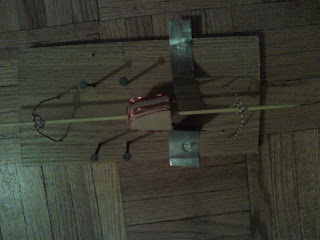When you go to an amusement park such as Canada's Wonderland, what is the first roller coaster you rush to? Your absolute favourite ride in the whole park. Well, my favourite roller coaster is Behemoth. I just love the idea of a really big and fast roller coaster. Although I would have loved it even more if it had loops in it, but because of the way it is built, having loops would be dangerous and impossible. Some are terrified of roller coasters, and some enjoy them very much, but has anyone ever stooped and thought how a roller coaster really functions? Well, since we are required to build a roller coaster in class, we must first think of the physics side of the matter, and then the entertainment part. Knowing Newton's laws are essential in building a roller coaster.
Newton's first law, law of inertia, states: '' all objects will remain in a state of rest or continue to move with a constant velocity unless acted upon by an unbalanced force.''
Newton's second law states: '' the acceleration of an object depends inversely on its mass and directly on the unbalanced force applied to it.''
Newton's third law states: ''for every action force, there is an equal and opposite reaction force.''
Using these laws, we can conclude that when the roller coaster is being pulled up the track with a chain, Newton's first law applies. When the roller coaster is in motion, from the second it is in free fall until it comes to a stop, the weight of the riders and the actual ride will impact its acceleration, which is Newton's second law. And the third law is displayed when the roller coaster is going up and against gravity, it eventually has to come down, towards it.
This goes to show that the saying ''what goes up must come down'' is a very true statement indeed.
-Peggy.
Newton's first law, law of inertia, states: '' all objects will remain in a state of rest or continue to move with a constant velocity unless acted upon by an unbalanced force.''
Newton's second law states: '' the acceleration of an object depends inversely on its mass and directly on the unbalanced force applied to it.''
Newton's third law states: ''for every action force, there is an equal and opposite reaction force.''
Using these laws, we can conclude that when the roller coaster is being pulled up the track with a chain, Newton's first law applies. When the roller coaster is in motion, from the second it is in free fall until it comes to a stop, the weight of the riders and the actual ride will impact its acceleration, which is Newton's second law. And the third law is displayed when the roller coaster is going up and against gravity, it eventually has to come down, towards it.
This goes to show that the saying ''what goes up must come down'' is a very true statement indeed.
-Peggy.












